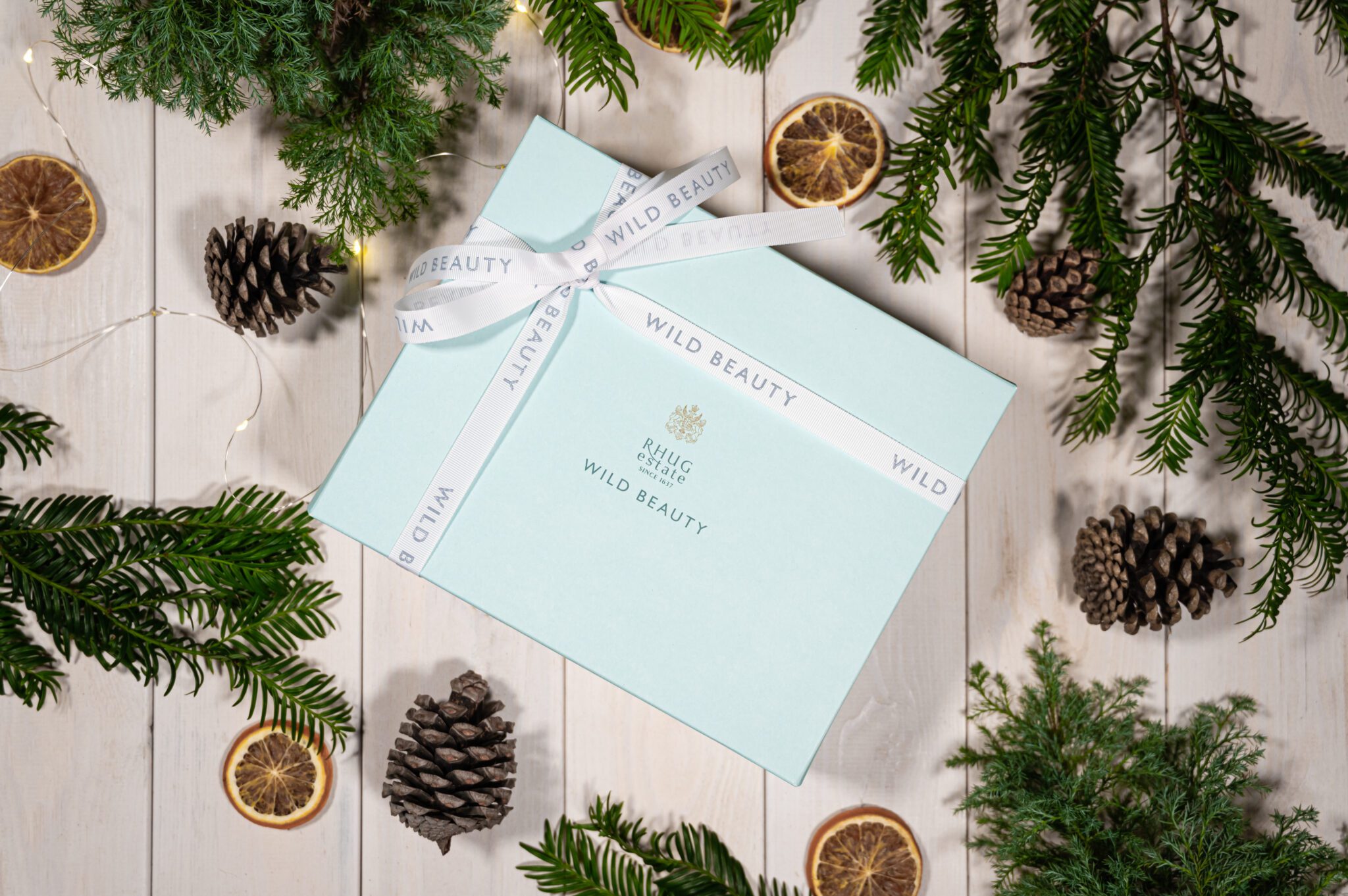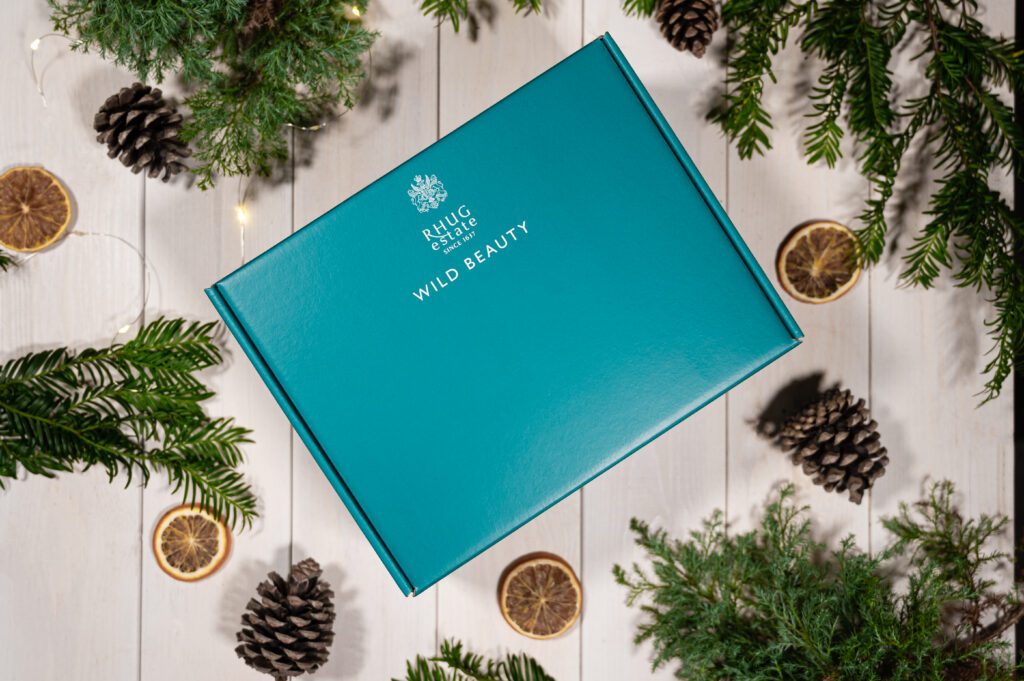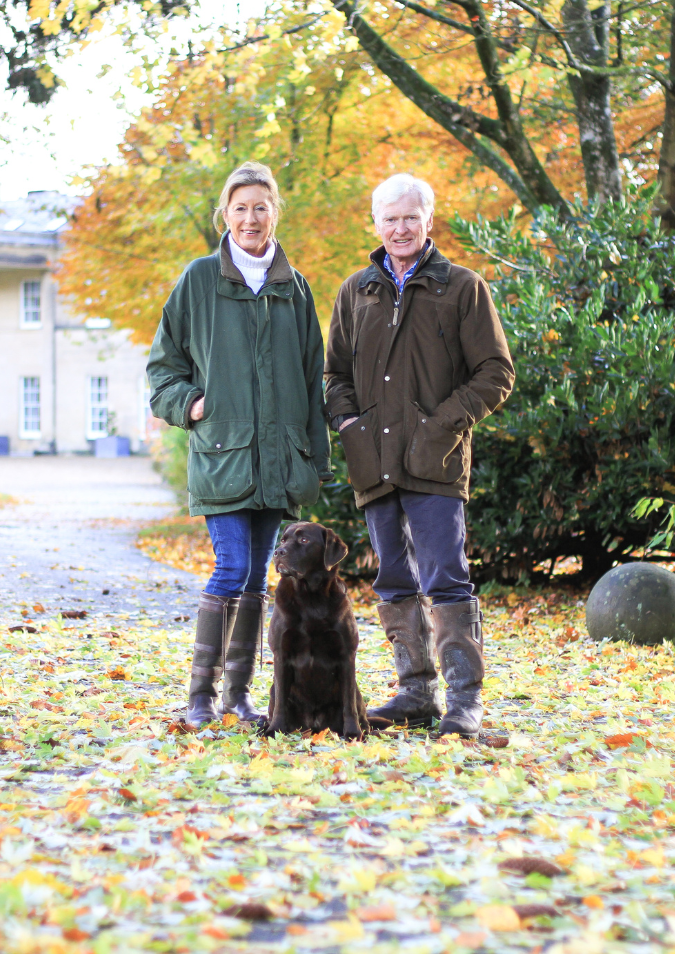Thursday, January 19, 2023
Wild Beauty is the brainchild of Lord Newborough, owner of Rhug Estate in North Wales. He has championed the highest standards of organic and sustainable farming for many years and more recently has been applying these same principles to it’s skincare range, Wild Beauty. Having gained the Butterfly Mark Certification in May 2022, packaging has been a big innovation focus for the skincare brand, we recently caught up with Operations Manager, Iain Russell, to find out about Wild Beauty’s latest packaging innovations, challenges and learnings.
Your packaging is already made with fully recyclable materials, so why are you in the process of changing your packaging?
Our original secondary packaging (i.e. the boxes) was made with some recycled content but the new packaging is 100% recycled. Our product packaging was also re-designed to require less physical material, whilst also being larger so we can display our product information more clearly.
The new product packaging is printed with vegetable ink and fully carbon offset through the World Lands Trust. Beyond this our printers are also ISO 14001 certified, and are engaging with conservation groups to ensure their operations ‘benefit’ biodiversity rather than impact upon it.
We have considered recycled board for the mail order boxes but current options are not yet sturdy enough for a delivery package. We therefore went for the 100% FSC option for these, printed with vegetable inks and again carbon offset through the World Lands Trust. This printer also focuses on intelligent design and operations to save energy and reduce waste.
What have been the challenges of changing it, and how are you working around these?
We have been very well served by our suppliers during the redesign process and our decision to choose sustainable and forward-thinking suppliers has greatly benefitted us. In truth, many of the added sustainability criteria we bring to our redesign were driven by our supply chain; or at the very least it made it considerably easier for our suppliers to say ‘yes’ to our requests.
Packaging structural integrity was one of the major issues; recycled board is simply not as strong as virgin board (weight for weight). However, with some clever design work for our product packaging we were able to find a work around. In the case of our mail box, we were able to choose a very sustainable next best option.


What packaging will you be moving to?
With the product redesign we took the choice to move to round bottles. These can be printed in a single print run rather than four print runs (i.e. one for each side), this requires considerably less energy and is a more precise way of printing. In so doing, we are saving cost, saving energy and ending up with a better product. We are also moving to a heavier bottle. Although we do not have the ability to refill at the moment, the bottles we are using will be strong enough to do so; should we have this ability in the future.
What have your learnt from this process and advice would you give to other brands looking to change their packaging?
Starting with sustainability as one of your design criteria is always the best way; if you chose a sustainable supply chain, and supply partners who care about sustainability, your supply chain will get more sustainable without you even needing to do anything. Combine this with your own efforts and you are off to a great start. I would also advise early engagement with certification bodies and groups, like Positive Luxury, we found the process enormously beneficial in our understanding of sustainability and our own sustainable position. Both factors make improving your sustainability a much easier task.
Another key progression for your business is to expand to refills, why is this important for Wild Beauty?
The refills will be launched later this year, for two of our most popular products. Far from being concerned as to how our customers may react, rather this is an option that has actually been driven by request from our customers. We are lucky in the respect that trends in luxury are changing; more and more people are respecting and valuing sustainable luxury just as much, and in some cases more, than what might be considered ‘traditional’ luxury products.
We are currently looking at a couple of design possibilities for the refill pouch material. One option would see the customer being able to drop the refill into a post box and have it delivered to a recycling centre that would break it down to its component materials and deliver those materials back into the supply chain for future reuse.
We are also very excited about the recent developments in compostable materials, which are now being made strong enough to contain liquids and oils – whilst still being something a customer can simply drop into their compost bin at home.
How has working with Positive Luxury and earning Butterfly Mark certification changed or informed your approach to packaging?
The huge benefit of working with Positive Luxury is in that simply four-letter word: ‘with’.
Many of our certifications are essentially a list of requirements, which require little engagement in the certification process. Positive Luxury worked with us and supported us at every stage of the process and beyond. We still engage with Positive Luxury and they help to promote the sustainability work we are doing and thus promoting the company as well.
Looking forward, is there anything else you are working on in the packaging space?
It has been a goal of ours for some time to go plastic free. We understand the carbon arguments for and against plastics, but for us the pervasive nature of plastic makes it something we wish to avoid. We already have plastic free secondary packaging and mail order boxes. But we still utilise plastic for the caps and closures. We would really like to replace this with something more sustainable and less environmentally pervasive.

“The importance of packaging innovation is ultimately to give your customer a good impression of your product; it’s crucial you make that first impression a good one. If your packaging is high-quality, customers are more likely to associate your brand and your products with quality.
Packaging innovation has the potential to reduce waste and costs, while adding value and driving sales. However, we must never forget that it must have a practical purpose as well, in protecting the product inside and keep it safe during shipment between the supplier and the retailer and whilst on the shelf. As online sales continue to grow, it is important that products are kept safe during transit.
Looking forward, packaging for the future will include using more advanced materials and artificial intelligence to, for example, mould round the product in transit, and require all companies to be much more conscious of their carbon footprint. Innovative ways of packaging are important in order to keep up with developments as well as ensuring that packaging is sustainable and presentable. Yet we mustn’t forget traditional options that still have a part to play in the modern world; here at Rhug we still use organic wool, from our sheep on the farm, as a packaging material in our mail order boxes.
Getting back to the present, the most important thing to do is to measure your carbon footprint, which forms your benchmark, and then work at ways of improving it. This will focus the mind and help you find efficiencies in your business in the drive to become a more sustainable business for the future.”
~ Lord and Lady Newborough
LEARN MORE ABOUT WILD BEAUTY’S BUTTERFLY MARK CERTIFICATION
< Back
About Positive Luxury
Since 2011 Positive Luxury has been accelerating organizations' adaptation to the new climate economy, keeping clients ahead of cultural and economic shifts. The company's unique four-part methodology is the only ESG assessment and certification program designed specifically for the luxury industry and incorporates a particular focus on innovation. Visit: www.positiveluxury.com and follow @Positiveluxury
Rejecting the traditional model rating past performance, Positive Luxury provides clients with precise gap analysis and the ability to identify and address current and future sustainability risks and diagnostics. In addition, the Connected Butterfly Mark communication tool also helps them leverage areas of strength and opportunities for competitive advantage.
Companies that meet Positive Luxury's exacting standards for certification are approved for the Butterfly Mark, a globally respected trust mark, independently verified, signaling that companies meet the highest standard of sustainability best practice across ESG+: environmental, social, governance and innovation. With a growing community of nearly 200 luxury companies, Positive Luxury has created a community of brands, retailers, and suppliers taking tangible action – measuring, managing, and reporting their ESG impact.
Diana Verde Nieto, Co-founder, and Co-CEO of Positive Luxury
Diana Verde Nieto is the Co-founder and Co-CEO of Positive Luxury, a pioneer in ESG, and a globally recognized figure in sustainability. Diana holds a degree in Global Leadership & Public Policy from Harvard Kennedy School, was trained by Former USA Vice President Al Gore at the Alliance of Climate Protection and was subsequently honored by the World Economic Forum as a Young Global Leader. In addition, Diana sits on various boards, including BA&SH and Grass Roots Soccer, an adolescent health organization that leverages the power of soccer to educate, inspire, and mobilize youth in developing countries.
"Consumers, employees, and the investment community demand transparency and accountability from brands, and our new Connected Butterfly Mark answer to that. From a single source of truth, people can easily access an unparalleled depth of verified ESG+ verified performance data, including a brand's sustainability journey, clearly stating their actions and ambition. This level of disclosure raises the bar for Luxury and beyond." Diana Verde Nieto, Co-Founder, and Co-CEO of Positive Luxury
Amy Nelson-Bennett, Co-CEO
Amy Nelson-Bennett brings 25 years of global experience across business transformation, brand and commercial strategy, and digital commerce and communications gained across media, retail, and luxury goods. Most recently, she led the successful turnaround of Molton Brown as CEO & President and joined the PE-backed Clive Christian Group to modernize the brand and operations and deliver rapid growth. Amy is responsible for the strategic direction of Positive Luxury, brand and commercial strategy, and day-to-day business operations. By championing a new definition of Luxury that aligns with the core principle of Luxury and sustainability, she aims to accelerate the actions of the Luxury industry and the collective positive impact it can make on nature and society.
"Our unique four-part methodology – assessment, certification, trust-building, and future-proofing – ensures every luxury business can continuously improve its ESG performance, realize ROI and optimize sustainability as a driver of corporate value. In addition, the Connected Butterfly Mark certification sets a new public disclosure standard for certified companies and the unique value Positive Luxury provides to luxury brands, retailers, and suppliers." – Amy Nelson-Bennett, Co-CEO of Positive Luxury.
For more information, please contact: Amore Philip | Apples & Oranges Public Relations | 929-229-5512 | Admin@aoprllc.com